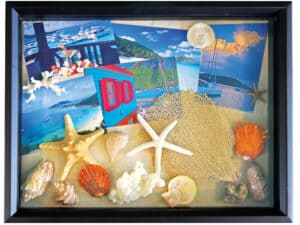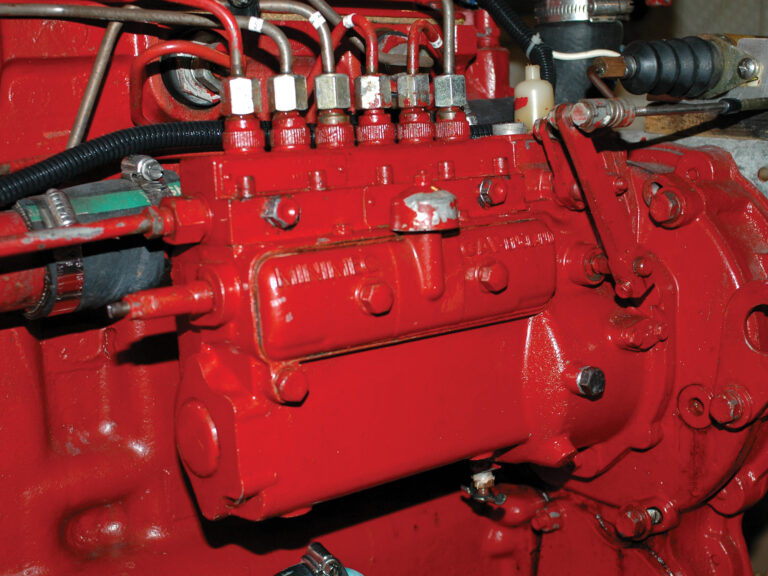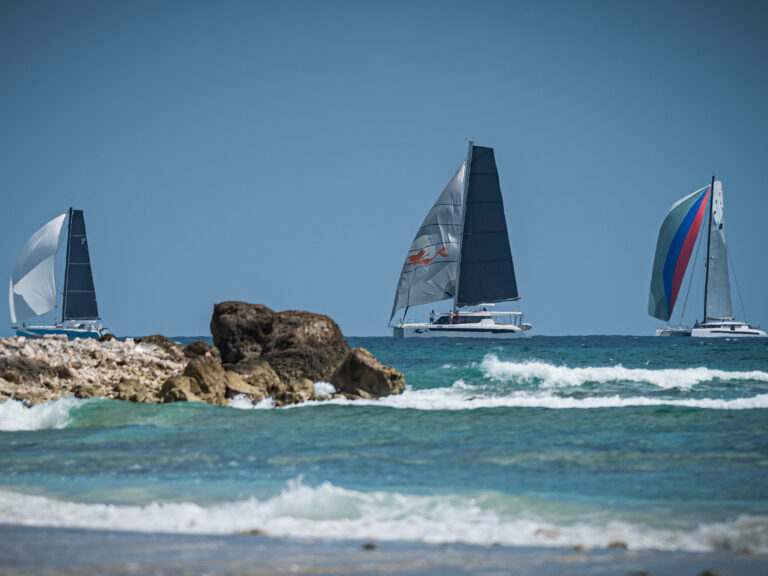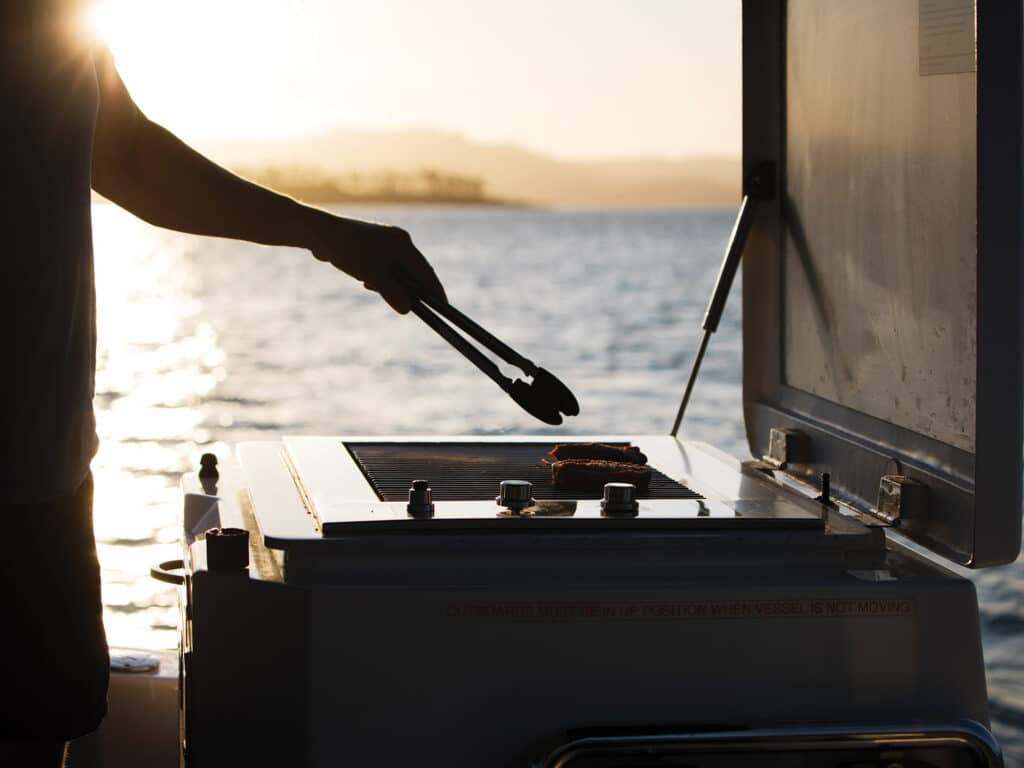
No question about it: Bareboat charters and hamburgers go together. Most bareboats have a barbecue grill in the cockpit (they’re scarce in Europe, so check first), and grilling is perfect for no-fuss dinners that keep galley time to a minimum and let you to enjoy the sunset outdoors.
But the grill is a system like any others on a boat. It needs to be used and maintained safely.
For starters, spend as much time having the check-out crew show you how to operate the grill as they do showing you the engine. Nearly every charter company has done away with charcoal (oh, the horror of live coals!) in favor of propane. Before you leave the check-out dock, have them light the grill to make sure it heats properly, and be sure you have enough propane for the duration of your adventure. Make sure the grill is bolted solidly to the rail so that you don’t feed dinner to the fishies. Also ask if any marinas in your planned cruising area prohibit grill usage; some have safety rules at the dock.
Barbecuing aboard is far different from grilling at home. Your backyard isn’t rolling with passing wakes, and you likely have no stray lines near the home grill, let alone a Bimini top. Safety for the crew and boat is your first concern, followed by perfect burgers, steaks or fish. Never—ever—try to grill while the boat is underway. That’s just asking for trouble. And if you have a flare-up (did you remember to trim all the excess fat from the meat?), a spray bottle with water can knock down the flame. On many grills, simply closing the lid will put out any flares.
Every grill has its own personality, with hot spots, cold spots, being fast or slow to heat, or just plain being cantankerous. Unless you bring a mitt, potholders, a meat thermometer and tongs, you should not expect to find them on board.
While many propane grills have temperature gauges, trust me on this: You can’t trust them. Better to use the “Mississippi test.” Hold your hand 3 to 4 inches above the hot grill and count one Mississippi… two Mississippi…. Two to three Mississippis before you have to remove your hand is high temp for burgers. Medium is three to four Mississippis, and low heat is six to 10. Propane barbecues should be heated long enough so that the meat sears when it’s placed on the grill.
Want to start a fight? Ask people whether meat should be flipped during cooking. Some chefs say you should flip meat at least twice so that the sear will keep the juices inside and the food won’t end up welded to the grill. But flipping continually is also the easiest way to create a dry burger or steak. If you think something is cooking too fast, just move it to the outside of the grill, where the heat is lower.
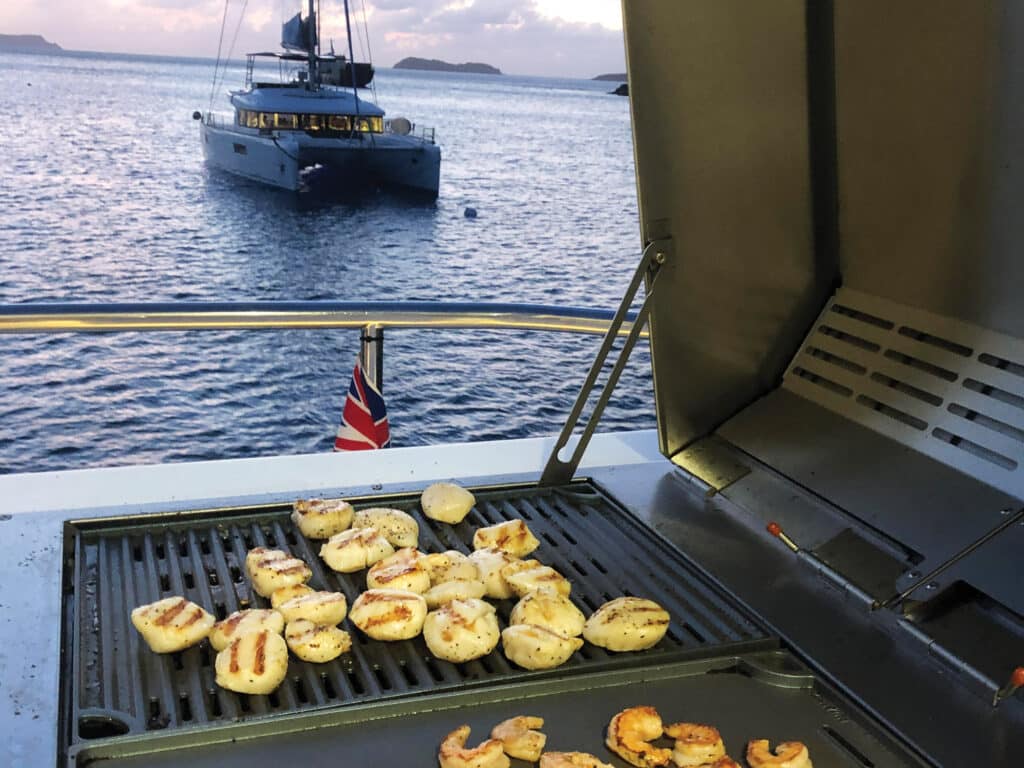
Burgers have a tendency to grow upward as they cook, and some chefs try to smash them flat with a spatula. No! Goodbye, juices. Instead, pat them gently. Don’t make them too thin. Make a little dent in the center of each patty before you start grilling, and the problem is solved. That dent also gives you a spot to add some zip with a splash of Worcestershire sauce, which soaks in quickly and gives a distinctive flavor.
After placing food on the grill, close the lid to circulate the heat evenly—but never leave the grill unattended. Don’t get sucked into watching another boat trying to anchor, or go to fix yourself something rummy and cold.
And with burgers, don’t forget the bun. It’s hard to beat fresh-from-a-Bahamas-bakery buns. Lightly coat them with butter on the grill side, and watch them like a hawk so that they don’t turn to charcoal. French brioche buns with high egg/butter content are delish, as are toasted onion rolls.
Want to start another fight? Ask someone about seasonings. For burgers, we’ve been successful with a little Kosher or sea salt, ground black pepper, perhaps a dash of garlic powder, all rubbed gently into the meat before grilling. My wife swears by Cavender’s Greek seasoning, which is a good substitute for salt and pepper. Bring it with you because it’s not available everywhere.
Don’t stop at grilling burgers or steaks. Throw some veggies on the barbie too. Grilled fruit is the new dessert. Grilled watermelon or pineapple is a delight. Brush slices lightly with olive oil, grill for five to six minutes, and turn once. Yum. The same goes for grilled onions or peppers (seasoned with herbs). Or brush peach slices with amaretto, grill two minutes a side, and serve with whipped cream. Mmm.
As for how long to keep all these things on the grill, the correct answer is: not too long. Grill heat, burger thickness, a breeze blowing—these all affect the cooking time. Instead of using a stopwatch, look for the burger to get juicy or “sweat” on top. At that point, flip the patty, check the time, and cook one or two minutes less than the first side. Cheeseburgers? Add the cheese with about two minutes to go, and close the lid to melt the cheese.
One last warning: A barbecue takes surprisingly long to cool off, so keep fingers, kids and canvas items far away until it is truly cold. Pay attention to your barbecue and grill safety, and you’ll find yourself humming Jimmy Buffett’s “Cheeseburger in Paradise.”




